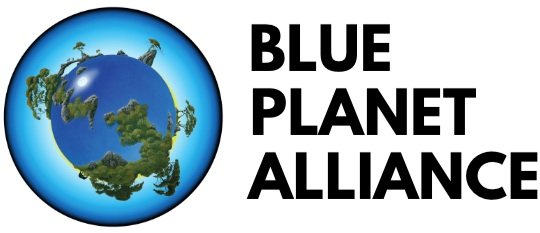ICY LANDSCAPE, WARMING FUTURE
Antarctica: a final frontier for exploration. In almost every corner of the world, humanity has fought for land, power, and the exploitation of resources. But would Antarctica find the same fate? More than 70 years ago, world leaders agreed on an ambitious and conservationist vision. Unlike our six other continents, we, as a global community, have decided to preserve Antarctica: we will safeguard Antarctica from conflict and exploitation. Now, in 2025, I look back on the ambition that we held then, reflect on the triple planetary crisis that we face now, and contemplate our own ability to implement such a conservationist mandate.
As a Blue Planet Alliance Global Ambassador onboard the Peace Boat’s 119th Global Voyage — as well as a member of BPA’s and Peace Boat’s joint “Youth for the SDGs” program — it was a privilege to journey to and experience Patagonia and Antarctica, and to hold space to have these deep conversations about the history and future of our planet. It is one thing to receive the opportunity to experience the magical nature of Patagonia and Antarctica; it is another, more enriching, thing to learn from experts and inspiring young leaders in these places.
We experienced awe-inducing natural beauty, from jaw-dropping sunsets in Torres del Paine to unbelievably blue icebergs in Antarctica to fascinating and adorable penguins in Ushuaia. Not only did we learn from the nature that surrounded us, but conversations about Antarctic governance, peer-led workshops, and a sustainable blue economy forum stood to ensure that we left this program with knowledge and a community ready to support us in our mission to advance the UN Sustainable Development Goals (SDGs) and the United Nations Decade of Ocean Science for Sustainable Development.
I felt particularly motivated by the glaciers we encountered along the way. This year, 2025, has been declared UNESCO’s International Year of Glacier Preservation, and today, glaciers are in dire need of saving. The climate crisis has pervasive consequences, and glaciers are feeling these changes most acutely. Glaciers, like the Glacier Martial in Ushuaia, Argentina, may no longer exist by the time I have children that grow up to be my age. This is harrowing to imagine, let alone process that this will soon be our reality. I feel thankful to have the opportunity to get to know these glaciers and their stories before they disappear. It is now my duty to be a voice for these glaciers and call for urgent and ambitious climate action in their name.
Hikers descending the Glacier Martial toward Ushuaia, Argentina
Antarctica is no exception to the realities of climate change. With ice sheets breaking away from the continent and vegetation pioneering where ice should be instead, Antarctica is going through a transformation — and not a welcome one — of its own. Even though this may be true, I couldn’t help but feel moved by how Antarctica is unlike any other place on Earth. Where else in the world can you see penguins playing in the wake of the ship, whales breaching in between icebergs, and a dramatic orange creamsicle sunset that reflects off Antarctica’s dramatic snow-capped mountains?
Although bearing witness to dramatic changes to the environment can be sobering, there were examples of how humanity can and is course correcting that leave me filled with hope. As an advocate against deep-sea mining, I reflect on the parallels between the final frontiers of the deep-sea and Antarctica. Knowing what we know now, both in terms of the threat that we have introduced to our planet as well as the precedent for international governance on the basis of preservation, compels me to think that we can protect the deep-sea just as we protected Antarctica so many years ago. I hope to share this story with the world and leverage the power of wonder that we reserve for our final frontiers for their protection.
As a Global Ambassador for Blue Planet Alliance, I was keen to find out if and how renewable energy was developing at some of our planet’s most far-flung locations. The Torres del Paine National Park in Patagonia may be isolated from the rest of the continent, but it did not prevent Chile from installing renewable-energy sources, including solar and wind energy. Ushuaia, Argentina, is also known as “The End of the World,” and even there, we found an eco-house called the “Nave Terra or Earth Ship” that was built and powered sustainably thanks to renewable-energy sources, including wind and solar. If these remote destinations are ready for the sustainable-energy revolution, it gives me faith that the rest of the world can be ready to take part in this green transformation, too.
Overall, I feel motivated as an advocate for the SDGs thanks to this program and the sponsorship by Blue Planet Alliance. Melting glaciers have lit a fire under me to be fierce in my advocacy for urgent and ambitious climate action. These experiences, combined with the deep peer-to-peer conversations and opportunity to reflect during this three-week program, have provided clarity to me in my own calling and mission, especially during this critical year of climate action. I look forward to leveraging this newfound clairvoyance in my mission to take a risk and launch my own ocean-climate action campaign.



